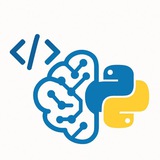🤖🧠 Mastering Large Language Models: Top #1 Complete Guide to Maxime Labonne’s LLM Course
🗓️ 22 Oct 2025
📚 AI News & Trends
In the rapidly evolving landscape of artificial intelligence, large language models (LLMs) have become the foundation of modern AI innovation powering tools like ChatGPT, Claude, Gemini and countless enterprise AI applications. However, building, fine-tuning and deploying these models require deep technical understanding and hands-on expertise. To bridge this knowledge gap, Maxime Labonne, a leading AI ...
#LLM #ArtificialIntelligence #MachineLearning #DeepLearning #AIEngineering #LargeLanguageModels
🗓️ 22 Oct 2025
📚 AI News & Trends
In the rapidly evolving landscape of artificial intelligence, large language models (LLMs) have become the foundation of modern AI innovation powering tools like ChatGPT, Claude, Gemini and countless enterprise AI applications. However, building, fine-tuning and deploying these models require deep technical understanding and hands-on expertise. To bridge this knowledge gap, Maxime Labonne, a leading AI ...
#LLM #ArtificialIntelligence #MachineLearning #DeepLearning #AIEngineering #LargeLanguageModels
❤3🎉1
🤖🧠 The Ultimate #1 Collection of AI Books In Awesome-AI-Books Repository
🗓️ 22 Oct 2025
📚 AI News & Trends
Artificial Intelligence (AI) has emerged as one of the most transformative technologies of the 21st century. From powering self-driving cars to enabling advanced conversational AI like ChatGPT, AI is redefining how humans interact with machines. However, mastering AI requires a strong foundation in theory, mathematics, programming and hands-on experimentation. For enthusiasts, students and professionals seeking ...
#ArtificialIntelligence #AIBooks #MachineLearning #DeepLearning #AIResources #TechBooks
🗓️ 22 Oct 2025
📚 AI News & Trends
Artificial Intelligence (AI) has emerged as one of the most transformative technologies of the 21st century. From powering self-driving cars to enabling advanced conversational AI like ChatGPT, AI is redefining how humans interact with machines. However, mastering AI requires a strong foundation in theory, mathematics, programming and hands-on experimentation. For enthusiasts, students and professionals seeking ...
#ArtificialIntelligence #AIBooks #MachineLearning #DeepLearning #AIResources #TechBooks
❤2🔥1
🤖🧠 AI Projects : A Comprehensive Showcase of Machine Learning, Deep Learning and Generative AI
🗓️ 27 Oct 2025
📚 AI News & Trends
Artificial Intelligence (AI) is transforming industries across the globe, driving innovation through automation, data-driven insights and intelligent decision-making. Whether it’s predicting house prices, detecting diseases or building conversational chatbots, AI is at the core of modern digital solutions. The AI Project Gallery by Hema Kalyan Murapaka is an exceptional GitHub repository that curates a wide ...
#AI #MachineLearning #DeepLearning #GenerativeAI #ArtificialIntelligence #GitHub
🗓️ 27 Oct 2025
📚 AI News & Trends
Artificial Intelligence (AI) is transforming industries across the globe, driving innovation through automation, data-driven insights and intelligent decision-making. Whether it’s predicting house prices, detecting diseases or building conversational chatbots, AI is at the core of modern digital solutions. The AI Project Gallery by Hema Kalyan Murapaka is an exceptional GitHub repository that curates a wide ...
#AI #MachineLearning #DeepLearning #GenerativeAI #ArtificialIntelligence #GitHub
❤3🔥1
In Python, image processing unlocks powerful capabilities for computer vision, data augmentation, and automation—master these techniques to excel in ML engineering interviews and real-world applications! 🖼
more explain: https://hackmd.io/@husseinsheikho/imageprocessing
#Python #ImageProcessing #ComputerVision #Pillow #OpenCV #MachineLearning #CodingInterview #DataScience #Programming #TechJobs #DeveloperTips #AI #DeepLearning #CloudComputing #Docker #BackendDevelopment #SoftwareEngineering #CareerGrowth #TechTips #Python3
# PIL/Pillow Basics - The essential image library
from PIL import Image
# Open and display image
img = Image.open("input.jpg")
img.show()
# Convert formats
img.save("output.png")
img.convert("L").save("grayscale.jpg") # RGB to grayscale
# Basic transformations
img.rotate(90).save("rotated.jpg")
img.resize((300, 300)).save("resized.jpg")
img.transpose(Image.FLIP_LEFT_RIGHT).save("mirrored.jpg")
more explain: https://hackmd.io/@husseinsheikho/imageprocessing
#Python #ImageProcessing #ComputerVision #Pillow #OpenCV #MachineLearning #CodingInterview #DataScience #Programming #TechJobs #DeveloperTips #AI #DeepLearning #CloudComputing #Docker #BackendDevelopment #SoftwareEngineering #CareerGrowth #TechTips #Python3
❤5👍1
💡 Building a Simple Convolutional Neural Network (CNN)
Constructing a basic Convolutional Neural Network (CNN) is a fundamental step in deep learning for image processing. Using TensorFlow's Keras API, we can define a network with convolutional, pooling, and dense layers to classify images. This example sets up a simple CNN to recognize handwritten digits from the MNIST dataset.
Code explanation: This script defines a simple CNN using Keras. It loads and normalizes MNIST images. The
#Python #DeepLearning #CNN #Keras #TensorFlow
━━━━━━━━━━━━━━━
By: @CodeProgrammer ✨
Constructing a basic Convolutional Neural Network (CNN) is a fundamental step in deep learning for image processing. Using TensorFlow's Keras API, we can define a network with convolutional, pooling, and dense layers to classify images. This example sets up a simple CNN to recognize handwritten digits from the MNIST dataset.
import tensorflow as tf
from tensorflow.keras import layers, models
from tensorflow.keras.datasets import mnist
import numpy as np
# 1. Load and preprocess the MNIST dataset
(train_images, train_labels), (test_images, test_labels) = mnist.load_data()
# Reshape images for CNN: (batch_size, height, width, channels)
# MNIST images are 28x28 grayscale, so channels = 1
train_images = train_images.reshape((60000, 28, 28, 1)).astype('float32') / 255
test_images = test_images.reshape((10000, 28, 28, 1)).astype('float32') / 255
# 2. Define the CNN architecture
model = models.Sequential()
# First Convolutional Block
model.add(layers.Conv2D(32, (3, 3), activation='relu', input_shape=(28, 28, 1)))
model.add(layers.MaxPooling2D((2, 2)))
# Second Convolutional Block
model.add(layers.Conv2D(64, (3, 3), activation='relu'))
model.add(layers.MaxPooling2D((2, 2)))
# Flatten the 3D output to 1D for the Dense layers
model.add(layers.Flatten())
# Dense (fully connected) layers
model.add(layers.Dense(64, activation='relu'))
model.add(layers.Dense(10, activation='softmax')) # Output layer for 10 classes (digits 0-9)
# 3. Compile the model
model.compile(optimizer='adam',
loss='sparse_categorical_crossentropy',
metrics=['accuracy'])
# Print a summary of the model layers
model.summary()
# 4. Train the model (uncomment to run training)
# print("\nTraining the model...")
# model.fit(train_images, train_labels, epochs=5, batch_size=64, validation_split=0.1)
# 5. Evaluate the model (uncomment to run evaluation)
# print("\nEvaluating the model...")
# test_loss, test_acc = model.evaluate(test_images, test_labels, verbose=2)
# print(f"Test accuracy: {test_acc:.4f}")
Code explanation: This script defines a simple CNN using Keras. It loads and normalizes MNIST images. The
Sequential model adds Conv2D layers for feature extraction, MaxPooling2D for downsampling, a Flatten layer to transition to 1D, and Dense layers for classification. The model is then compiled with an optimizer, loss function, and metrics, and a summary of its architecture is printed. Training and evaluation steps are included as commented-out examples.#Python #DeepLearning #CNN #Keras #TensorFlow
━━━━━━━━━━━━━━━
By: @CodeProgrammer ✨
❤12
